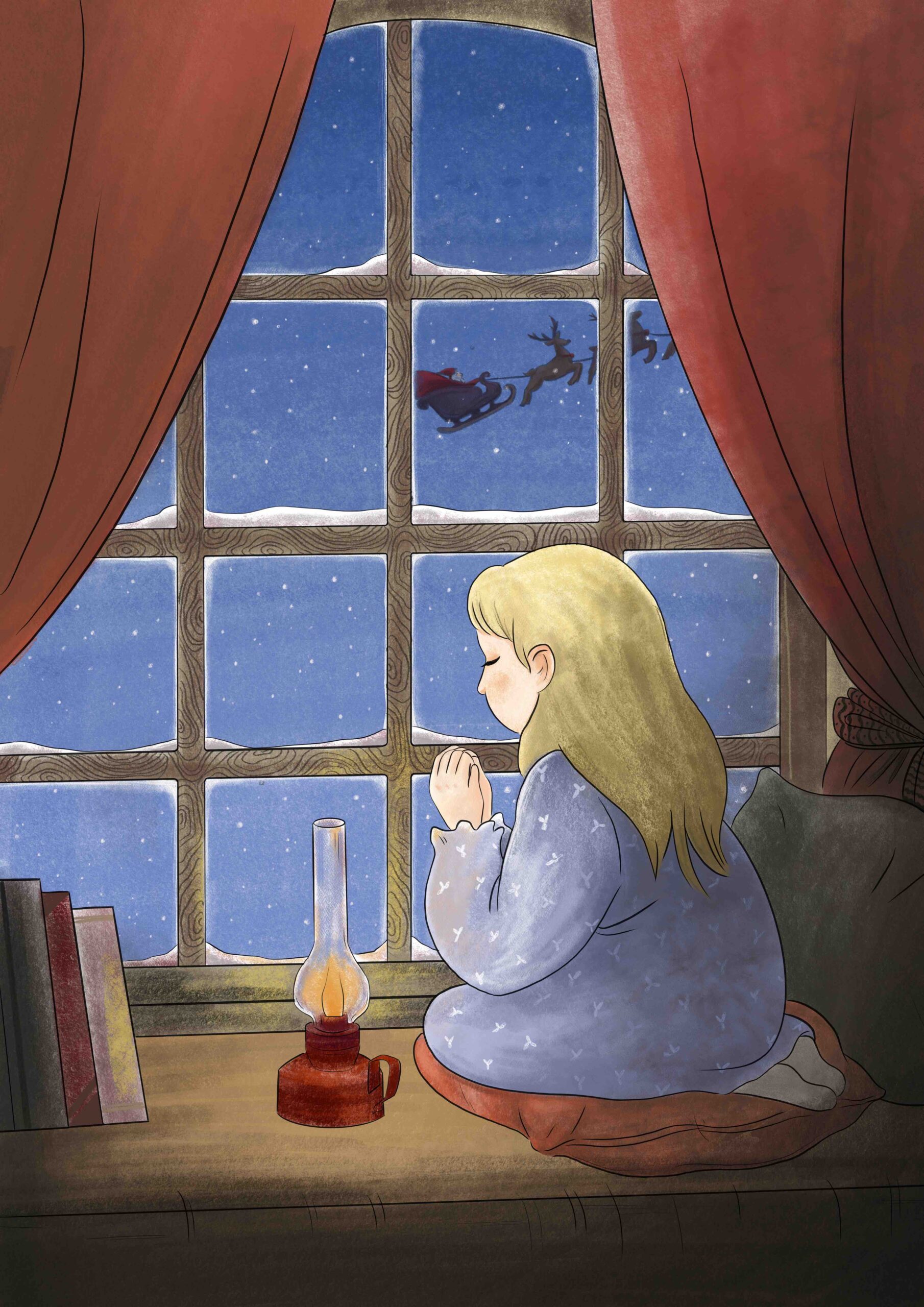One hundred and twenty-four years ago, an 8-year-old girl wrote a letter to the editor of The Sun, a New York newspaper, asking, “Please tell me the truth; is there a Santa Claus?”
The answer, “Yes, Virginia, there is a Santa Claus,” is the most reprinted newspaper editorial of all time, a classic appearing in dozens of languages—in newspapers, books, movies, and even the Old Farmer’s Almanac, and on posters and stamps. What makes it endure? Is it because “Yes, Virginia” perpetuates the best traditions of Christmas? Is it because it touches on the connection between parents and children? Is it because it makes us long for the days of the great American newspaper? Or is it something more?
The author, Sun editorial writer Francis Pharcellus Church, grumbled when he was handed the little girl’s letter. “Some of my little friends say there is no Santa Claus,” wrote Virginia O’Hanlon. “Please tell me the truth.” Something in the innocent query touched the veteran newsman. Church quickly turned in a 500-word reply, printed on September 21, 1897, on Page 6 with no byline. “Yes, Virginia, there is a Santa Claus,” Church wrote.
“He exists as certainly as love and generosity and devotion exist, and you know that they abound and give to your life the highest beauty and joy. Alas, how dreary would be the world if there were no Santa Claus. It would be as dreary as if there were no Virginias. There would be no childlike faith then, no poetry, no romance to make tolerable this existence.”
The editorial was destined to live on, far beyond Church’s death in 1906, The Sun’s demise in 1950, and even Mrs. Laura Virginia O’Hanlon Douglas’ passing in 1971.
“You couldn’t stop it if you wanted to,” said Jim Temple, grandson of O’Hanlon. For generations, O’Hanlon’s descendants have quietly become ambassadors of the Christmas spirit, crossing the country to events honoring her and reading the famous letter and the responses. In Pittsburgh, Pennsylvania, Temple and his wife read the famous letter and editorial to college students at a Marine Corps Toys for Tots event held in 2017.
“My grandmother gave us all a reason for believing,” said Temple in a recent interview. “It also has been a way for generations of parents to address the skepticism of their children about Santa Claus,” he added.
Many years ago, Temple’s own granddaughter Maggie questioned Santa’s existence. She had doubts, questions, and theories. Her grandparents stared silently ahead as they drove down the road, pretending not to listen. It was more than just a right to challenge the existence of Santa Claus. “It’s a family tradition,” quipped Temple.
Maggie is a symbol of the millions of children who ask that very question each holiday season. In fact, the question and the history behind the “Yes, Virginia” line have spawned a cache of collectible Christmas tree bulbs, dolls, books, and advertising campaign memorabilia. Inspired by the “Yes, Virginia” story, Macy’s launched its first “Believe” campaign in 2008, benefiting the Make-A-Wish Foundation.
“I remember Grandmother sitting near the fireplace and reading the letter and editorial, and thinking she is the spirit of Christmas,” Temple recalled. O’Hanlon, who loved to tell her story, led a life of achievement. “She was a modern woman ahead of her time,” said Temple. She earned a master’s degree and doctorate in education. And for decades, she was a New York City school teacher and principal.
She loved baseball. She took her grandson to his first movie and showed him how to use the subway system. She always wore a string of pearls around her neck, high heels, and an elegant coat. “She raised my mother as a single parent. I don’t know why there was a divorce; they didn’t talk about that kind of stuff,” said Temple, a retired manager for the New York State Department of Transportation. As for her childhood home in Manhattan, it is now home to the studio school where her legacy is celebrated.
Temple said he first realized how famous his grandmother was after he and a group of classmates at the Citadel, the military college of South Carolina, were watching the Ed Sullivan show one evening and saw his grandmother on the show. “I think down deep we always realized she was a special lady,” Temple said.
And special she was. O’Hanlon received a steady stream of mail about her letter throughout her life. She would include a copy of the editorial in her replies. In an interview later in life, she credited it with shaping the direction of her life quite positively. Historians have pointed out that the editorial and letter are about a time when America was beginning to define its Christmas—a Victorian Christmas.
Lori Falce, community engagement editor for the Tribune-Review Newspaper, says the story speaks about generations. “It’s about respect, respecting the child and the adult who asks questions,” said Falce. “My own son went through that questioning phase about Santa Claus,” she recalled. “Virginia O’Hanlon’s father cleverly dodged the question by pointing his daughter in the direction of The New York Sun.”
Crusty newspaper editors have a particularly soft spot for “Yes, Virginia.” The editorial evokes the days of the journalist’s newspaper, like The Sun—a time when newspapers were the most trusted news medium, when the great American editorial was really the great American editorial. As Virginia put it in her letter: “Papa says, ‘If you see it in The Sun it’s so.’”
Andrew Conte, director of the Center for Media Innovation at Point Park University, points out that “Yes, Virginia” is more than just a century-old story about a bygone era in journalism. It’s not just about a girl in New York. It’s about children everywhere and grownups big enough to remember. “It’s about faith, wonder, joy, and love,” said Conte.
“No Santa Claus!” wrote Church. “Thank God! he lives, and he lives forever. A thousand years from now, Virginia, nay, ten times ten thousand years from now, he will continue to make glad the heart of childhood.”
Amen, and Merry Christmas.













